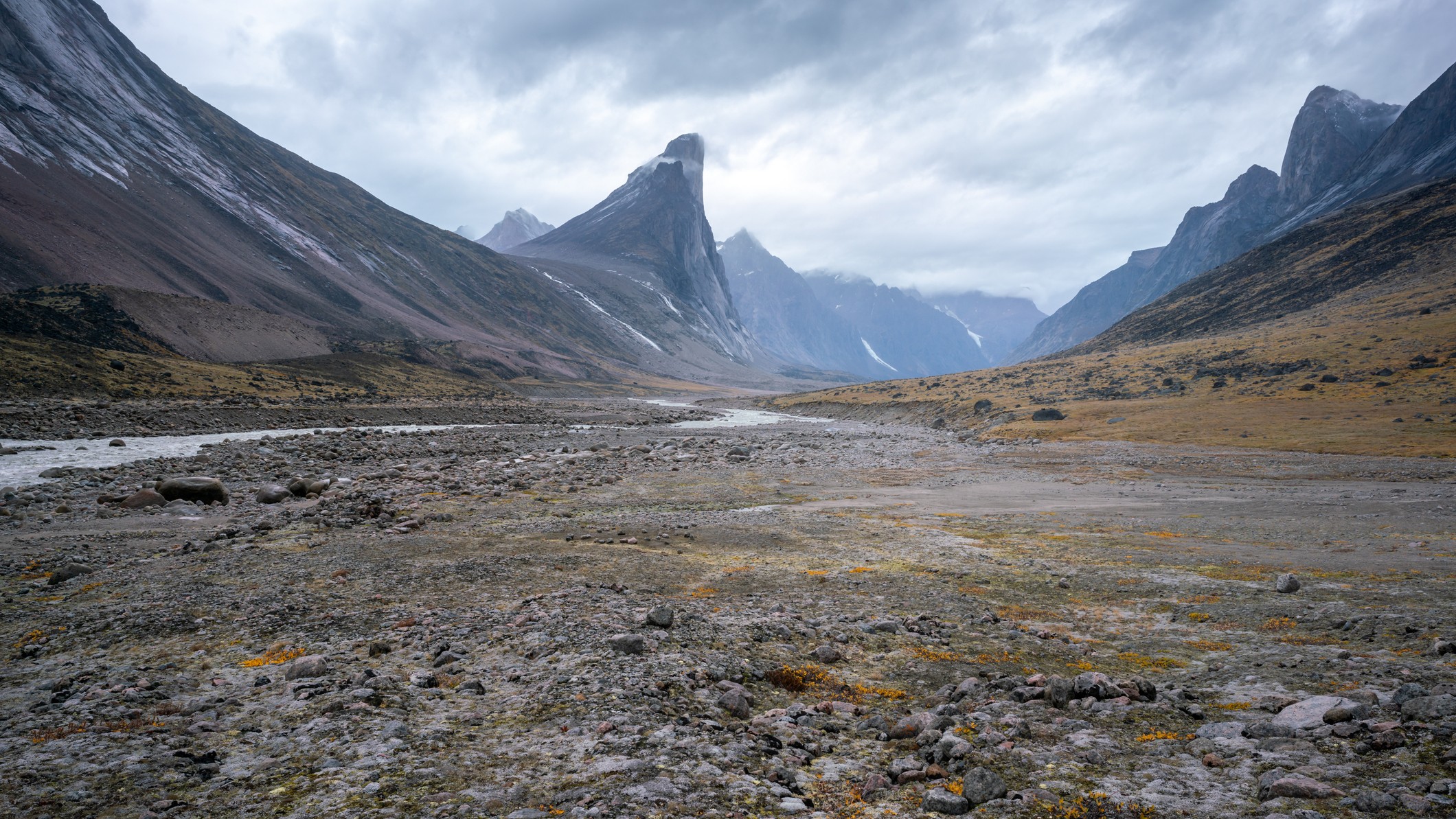Mount Thor: The mountain with Earth's longest vertical drop
Mount Thor, also known as Thor Peak, is a mountain in Nunavut, Canada with the largest vertical drop in the world — a terrifying escarpment with an average overhang of 15 degrees from vertical.

Name: Mount Thor
Location: Baffin Island, Nunavut, Canada
Coordinates: 66.53333154734997, -65.31666661096878
Why it's incredible: Mount Thor is home to Earth's largest vertical drop.
Mount Thor is a remote mountain in Canada with the largest vertical drop in the world. The mountain is just under 5,500 feet (1,675 meters) tall — but its most striking feature is its west face, which is so steep that it actually curves back on itself.
An object falling from the top of Mount Thor's western cliff would plummet 4,100 feet (1,250 m) before hitting anything. If a human were to jump off the summit and not deploy a parachute, they would remain in the air for a terrifying 26 seconds.
Mount Thor's west face has an average angle of 105 degrees, which means that the mountain has an overhang of 15 degrees. The western face is, as a Facebook post put it, "steeper than vertical" — making the mountain look like it was cleaved unevenly in half.
Mount Thor is named after the Norse god of thunder. It is located on Baffin Island, the largest island in the Canadian Arctic Archipelago.
Related: Savonoski Crater: The mysterious, perfectly round hole in Alaska that scientists can't explain
The mountain sits on the eastern edge of the Canadian Shield, a massive geological formation with rocks that are at least 1 billion years old. But the peak belongs to the Arctic Cordillera mountain range, which stretches from Ellesmere Island to Labrador.
Mount Thor is made of solid granite that formed between 3.5 billion and 570 million years ago. The mountain was carved over millennia by glaciers, whose repeated advance and retreat between 18,000 and 1,500 years ago eroded the west face into the C-shape we see today.
Get the world’s most fascinating discoveries delivered straight to your inbox.
Despite its remote location, Mount Thor is a popular destination for rock climbers. American astrophysicist Lyman Spitzer and his mountaineering partner Donald Morton made the first recorded ascent of Mount Thor in 1965, but the first ascent of the mountain's west face wasn't until 1985 — and that took 33 days.
Discover more incredible places, where we highlight the fantastic history and science behind some of the most dramatic landscapes on Earth.

Sascha is a U.K.-based staff writer at Live Science. She holds a bachelor’s degree in biology from the University of Southampton in England and a master’s degree in science communication from Imperial College London. Her work has appeared in The Guardian and the health website Zoe. Besides writing, she enjoys playing tennis, bread-making and browsing second-hand shops for hidden gems.
You must confirm your public display name before commenting
Please logout and then login again, you will then be prompted to enter your display name.
